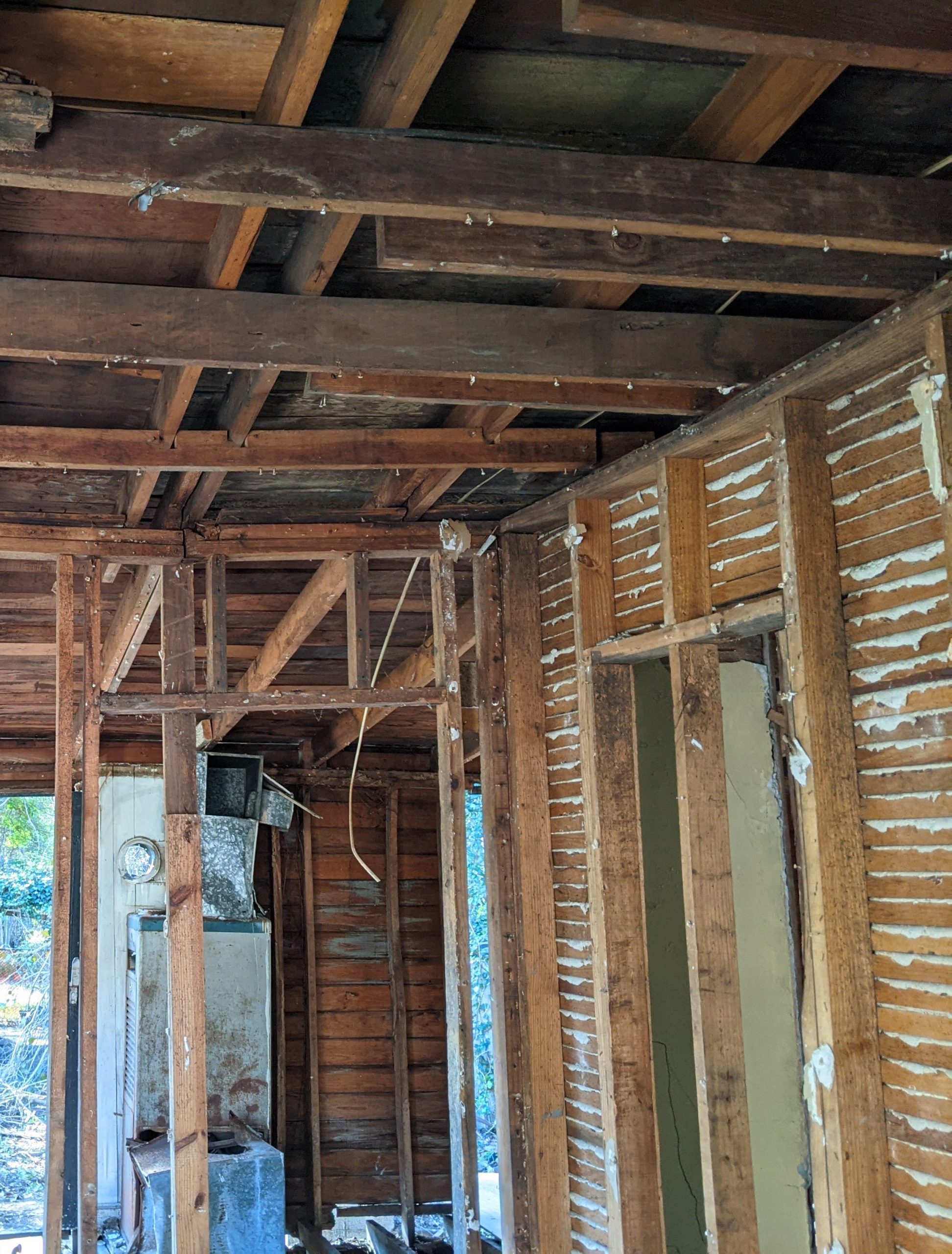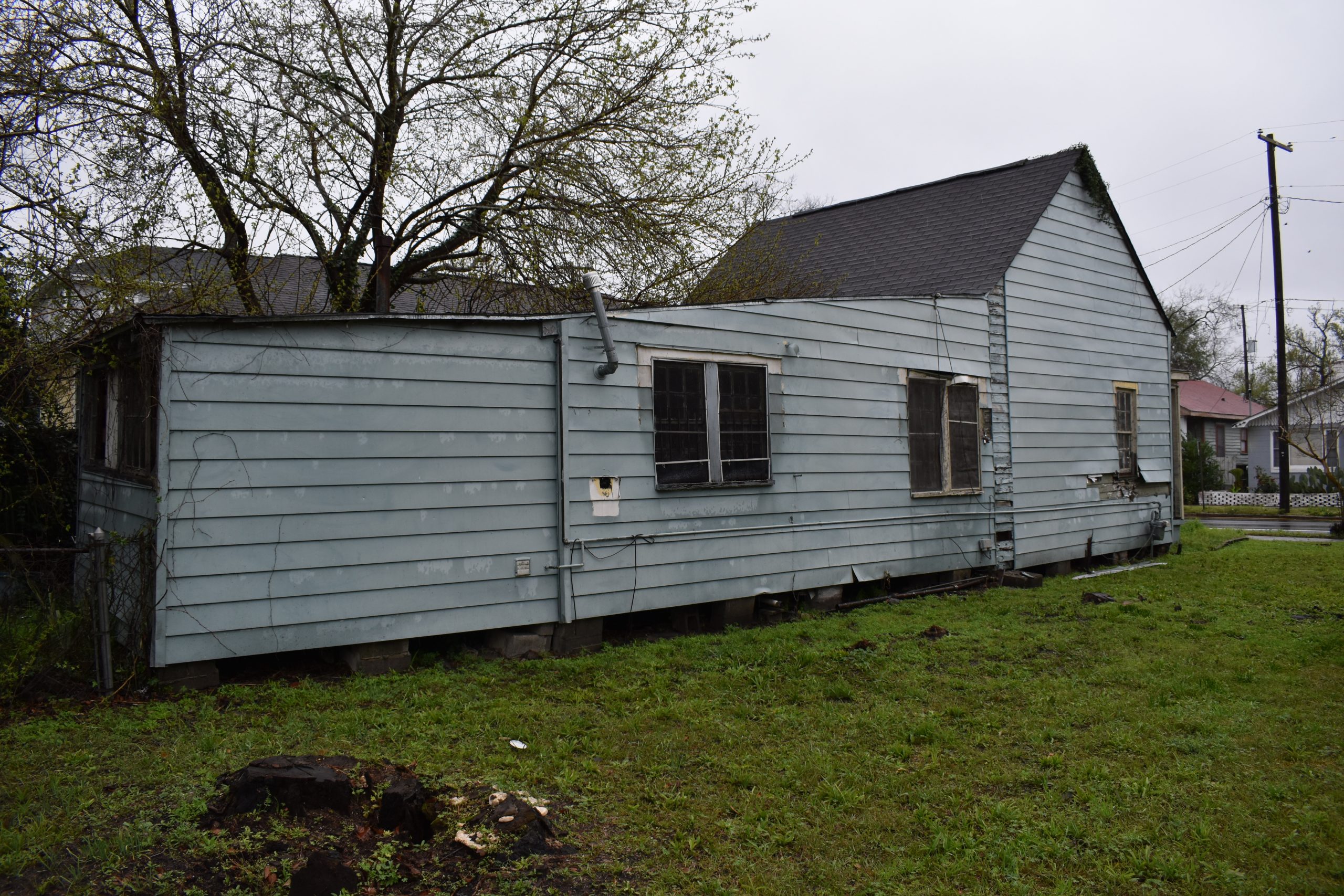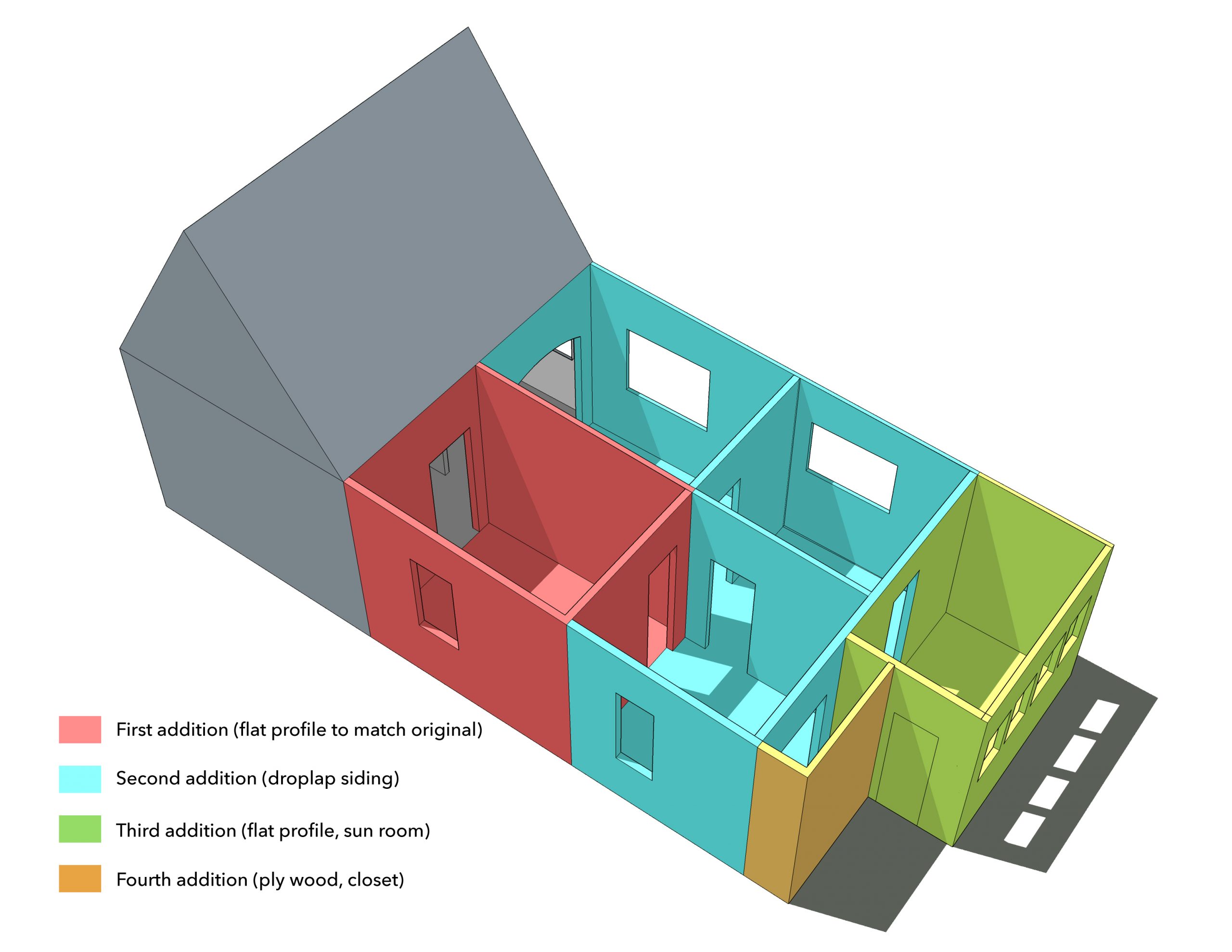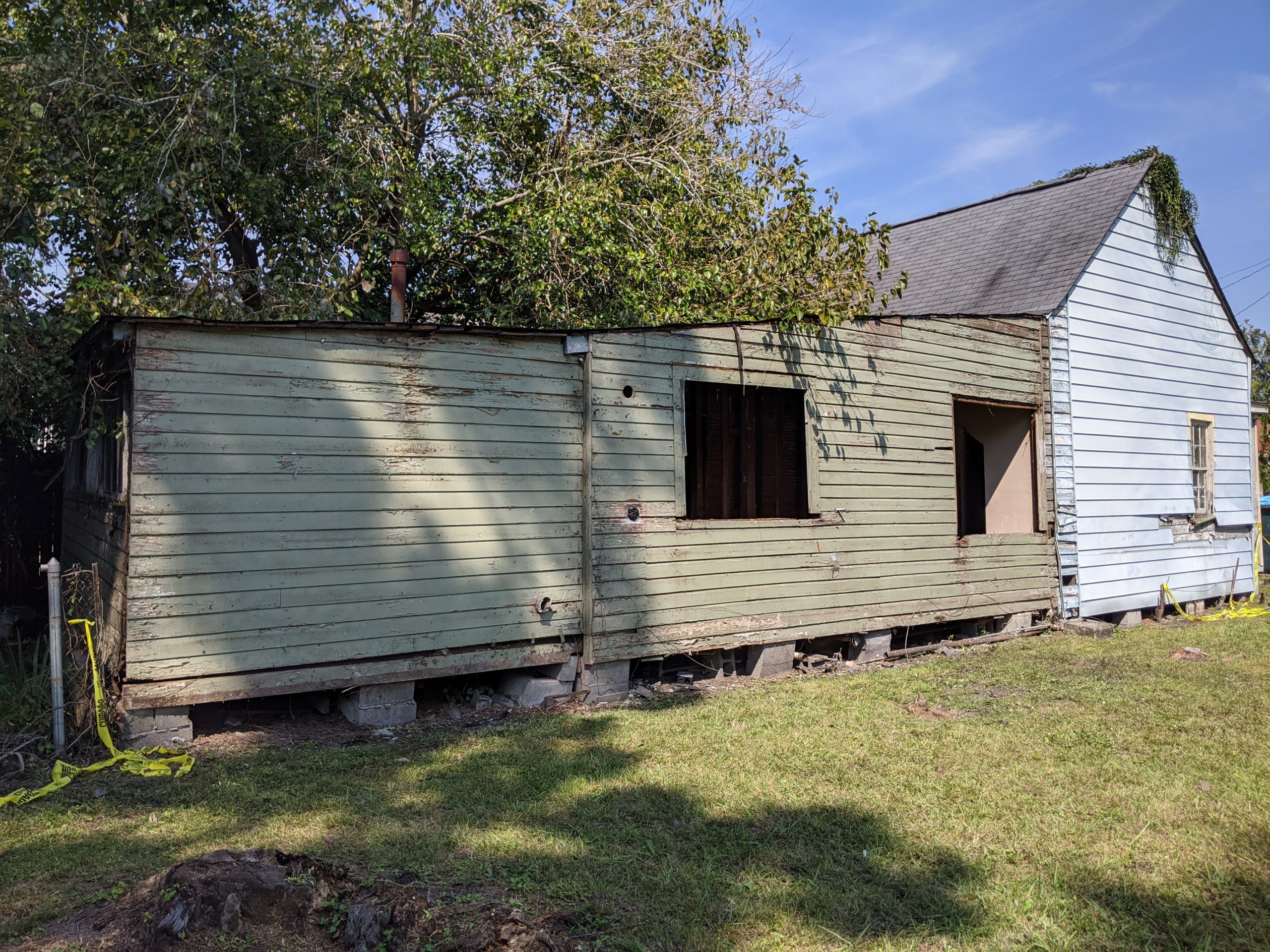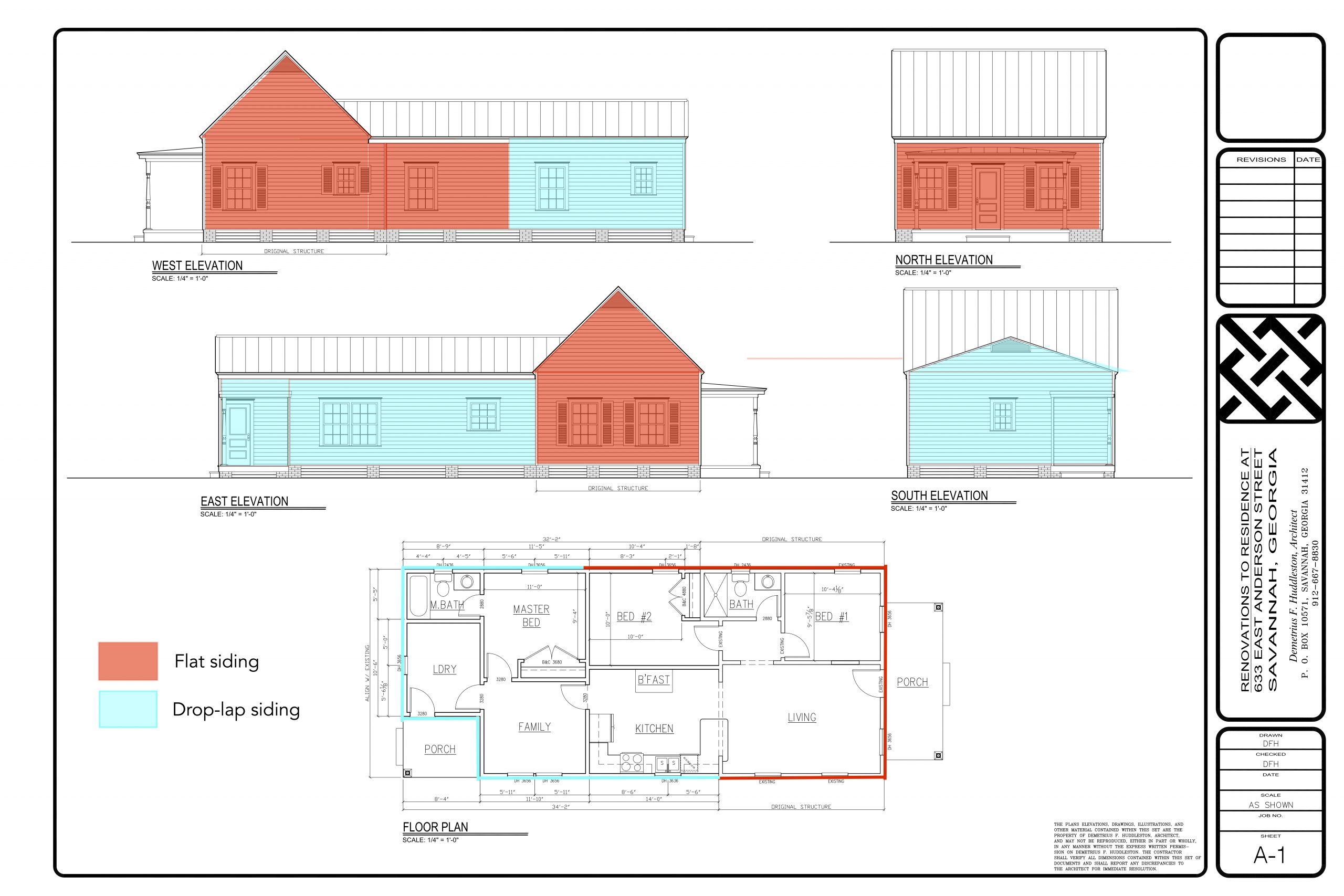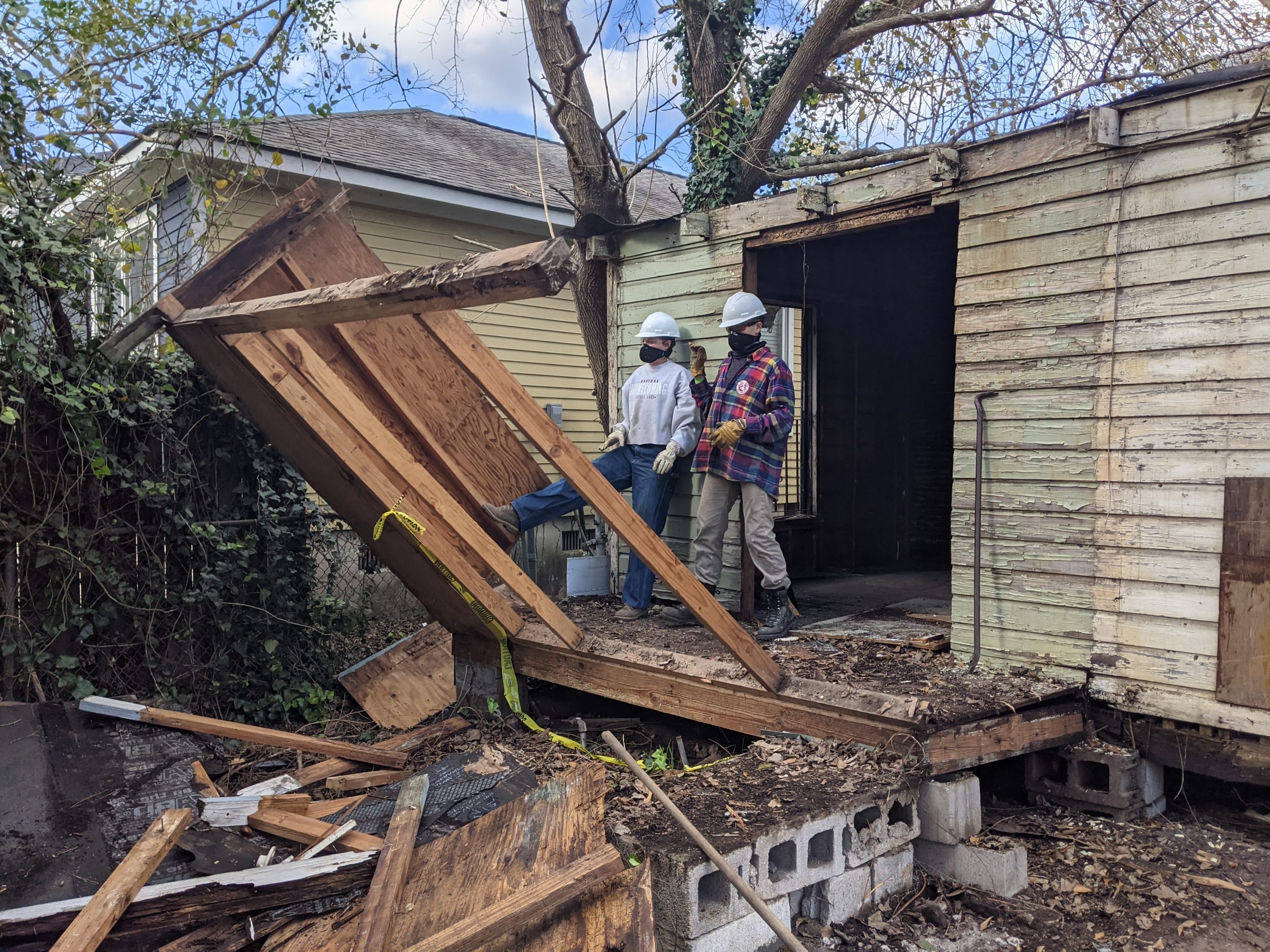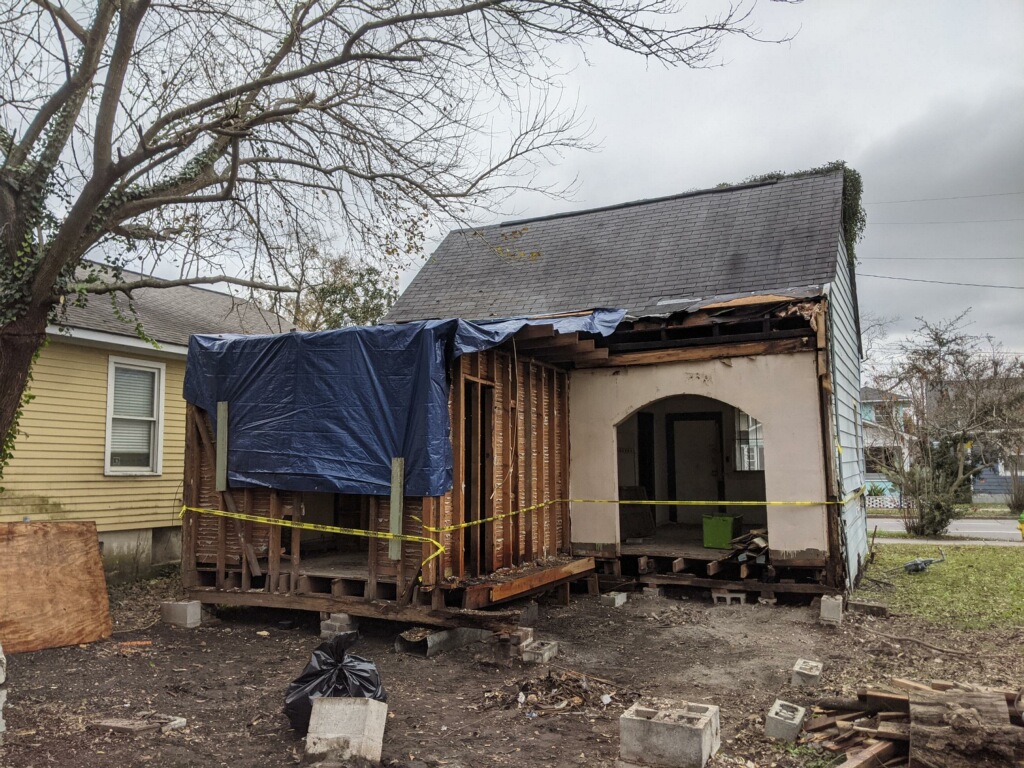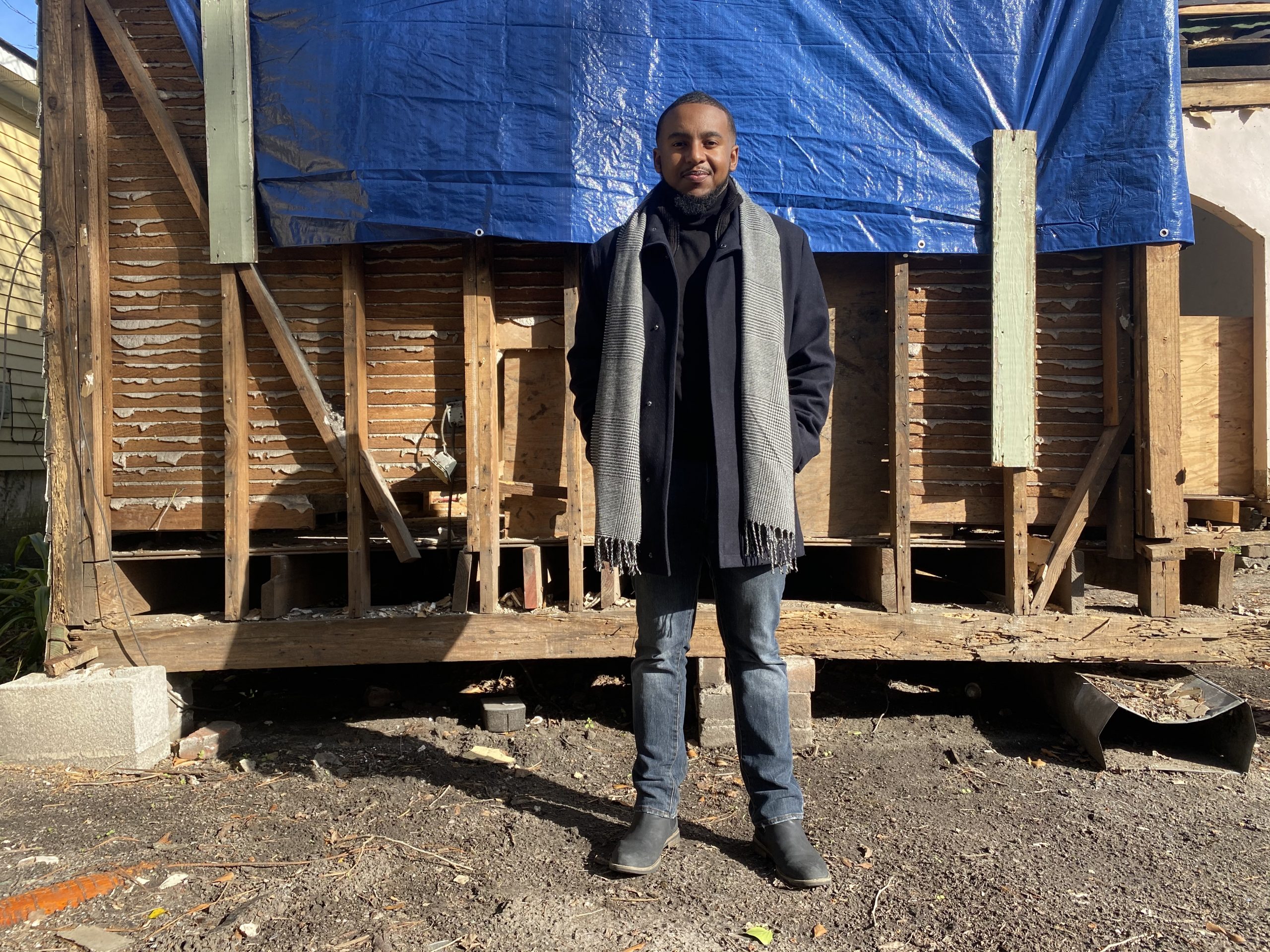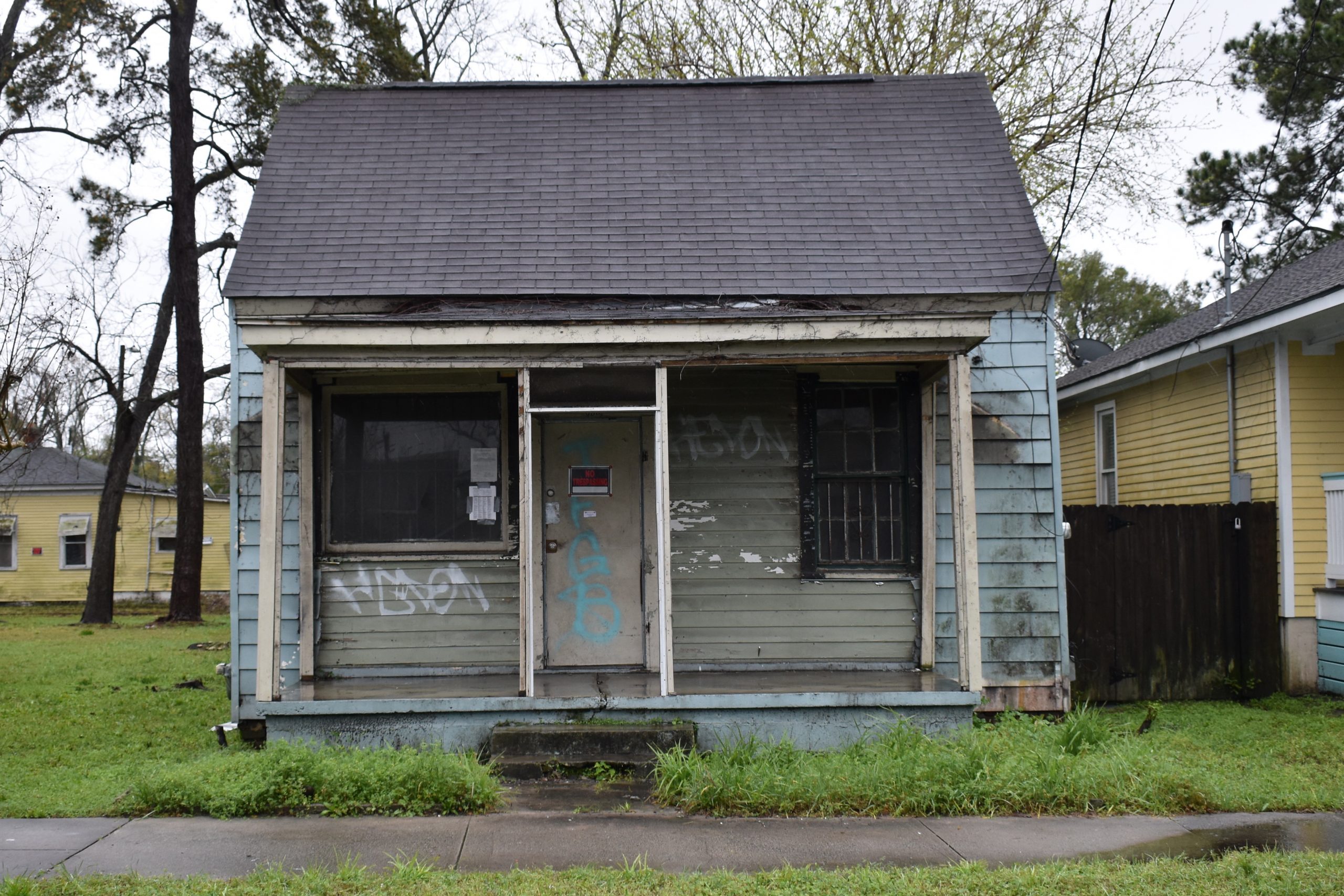
Houses evolve over time. The changing needs of a homeowner, not to mention their changing tastes, can often transform a house’s form and style in dramatic ways over the course of a century or more. In a historic home, some of those changes can be obvious, such as a building clad in aluminum siding, or hard wood floors covered wall to wall in orange shag carpet. While other changes, such as those made to the floor plan, can be more obscured – only evident when walls are opened and framing exposed.
Take for instance the HSF Revolving Fund property at 633 E. Anderson, which is about to undergo rehabilitation by its new owner. This unassuming little worker’s cottage was built in the 1890s or earlier, though the actual date is unknown. What do we know, is that it was originally built as a small, two-room dwelling. Over the course of the 20th century, those two rooms were added on in phases, eventually more than doubling the original footprint of the house.
Each addition was more poorly built than the last, and now…decades later…the damage, compounded by the poor construction practices, is irreversible in most cases. As this project gets underway, the property owner has requested permission from HSF (who holds a preservation easement on the house) to deconstruct those additions and reconstruct them to current code with new materials. The challenge for HSF is discerning what is worth saving, and what should be rebuilt. But discerning those changes and establishing the sequence of evolution can be both fascinating and confounding.
When assessing a historic home, there are two primary sources to which we look in order to establish changes over time – photographic/documentary evidence and physical evidence. There are no known historic photographs of this house, nor are there any municipal records since it was located outside Savannah city limits at the time of its construction. The only indication we have as to its original form comes from the Sanborn maps. The Sanborn Map Company was in business from 1866 – 1977. They created an estimated 12,000 maps of cities and towns across the country. Fire insurance companies would use these maps to “assess total liabilities” in a given city. Map makers would include each and every structure on a given street, including a detailed drawing of the structure’s footprint; notating its use, roof material, or whether it was wood frame or brick. Over the years, Sanborn would return and update those initial maps to show changes to the structures. Click here to explore Georgia’s Sanborn maps archive.
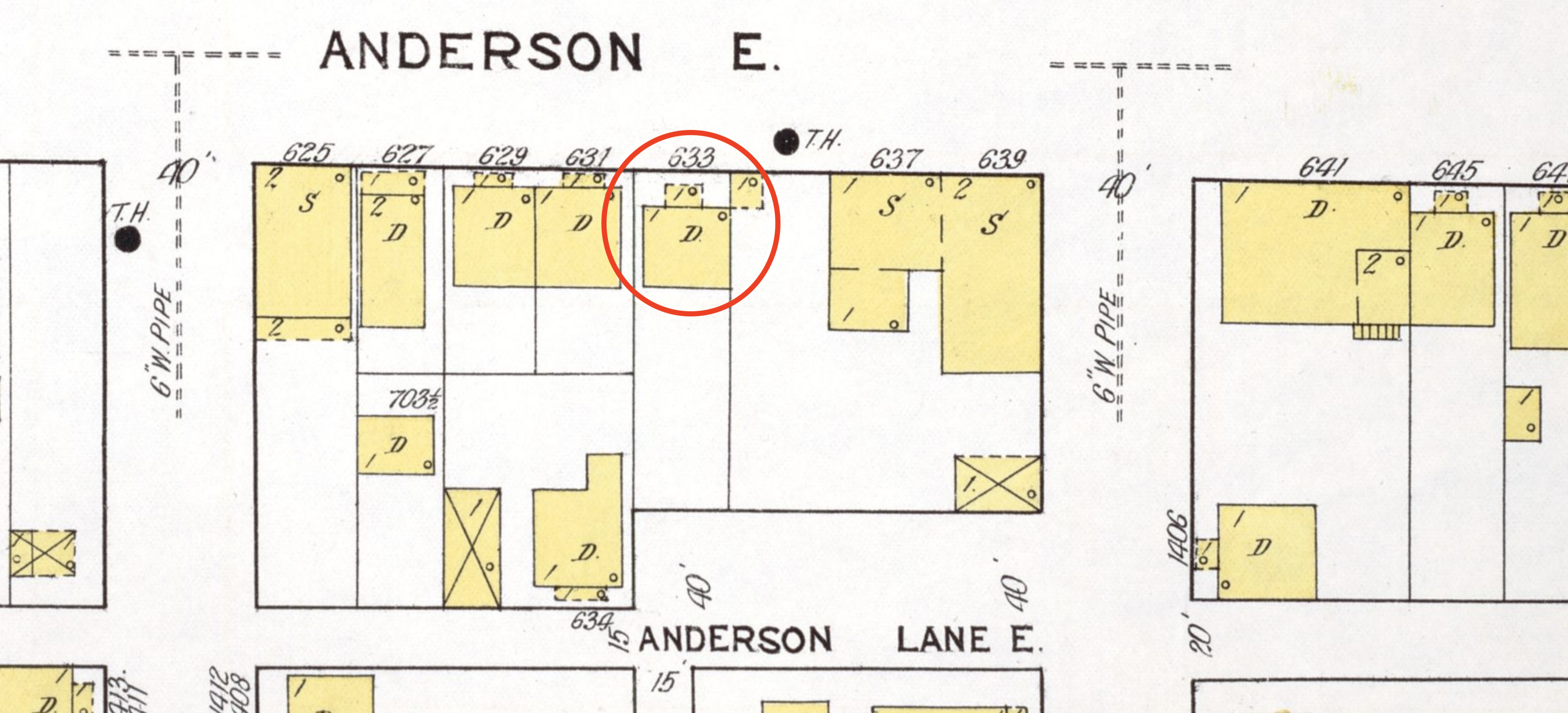
The 1898 and 1916 edition of the Savannah Sanborn Map depicts this house as a simple, small square with a tiny narrow front porch…clearly without the rear additions. That tells us they were not original, but it does not tell us when or how they were constructed. HSF initially assumed they were built in the 1950s and 60s, and thus did not assign much significance to them. Based on this assumption, and due to their condition and overall poor construction, HSF’s Architectural Review Committee approved removal (or deconstruction) of the additions in their entirety. (Note: HSF only allowed deconstruction to proceed after reviewing and approving the new design, and issuing strict instructions that if anything of historic significance was discovered, work was to cease and HSF to be notified.) The plan was for the owner to rebuild the additions on the same footprint, with largely the same floor plan. The main modification would be the roofline. The additions had been built with a sloping shed roof. This is what caused most of the water damage over the years. The new roof will be a moderately pitched gabled roof for improved water runoff.
In late 2020, the property owner hired Re:Purpose Savannah, a non-profit organization that specializes in deconstruction and “material preservation.” When a structure, or even a portion of one, can’t be saved, they will dismantle it piece by piece, sparing it from the landfill. Their crew saves all they can to be resold at their lumber yard. Those materials are often used in other restoration projects. Re:Purpose began deconstruction by removing all the drywall and plaster, exposing the studs and rafters throughout, and were able to get the first look at the internal structure in a long time. They immediately contacted HSF upon realizing that the additions were possibly much older than previously thought. For instance, one room exhibited much older construction practices, such as plaster and lathe, and cross bracing in the framing. It was determined that this room must have been the first addition, likely built sometime shortly after 1916. This room is indicated in red in the above illustration. As the oldest addition HSF is asking that every effort be made to retain and preserve the historic fabric of this room and incorporate it into the new construction.
The next addition included the single biggest expansion of the building consisting of three rooms, indicated in blue in the above illustration. This section appears to have been built with older salvaged material, so it’s hard to definitively date it. Rafters in the additions, a structural element usually hidden from view, exhibited different paint colors; indicating that they had once been part of a separate structure, and were likely exterior lumber at one point. Two more subsequent additions were added to the building following this, including a closet and a sun/mud room (pictured in orange and green). We know that these were the last additions because one can see exterior siding inside each of these spaces, indicating they were tacked on to a previous addition, as an after thought.
The type of exterior siding used on the building was also one way that HSF “read” the house, and determined the sequence in which these additions were added. There are two types of siding found on the building. The original house was clad in a flat, straight profile siding. The first addition was clad in the same type of siding, to match. The next phase of additions was clad in a scooped profile siding, or novelty, or drop-lap siding. The late addition of a sun/mud room was covered in a flat profile, and the closet addition was constructed of plywood, then covered in aluminum siding. When these additions are rebuilt with modern materials, HSF will not only require that true wood siding be used, but that the same style of siding be incorporated in the same areas to retain and distinguish the history or narrative of this particular house’s evolution.
To watch a short video about this property and the homeowner’s plans to bring it back to life, click here.
